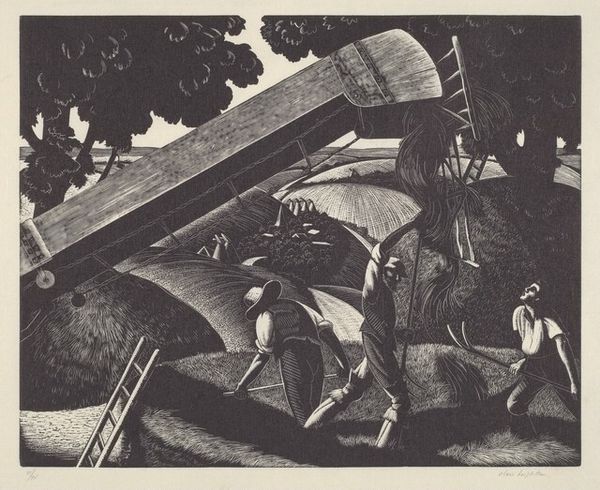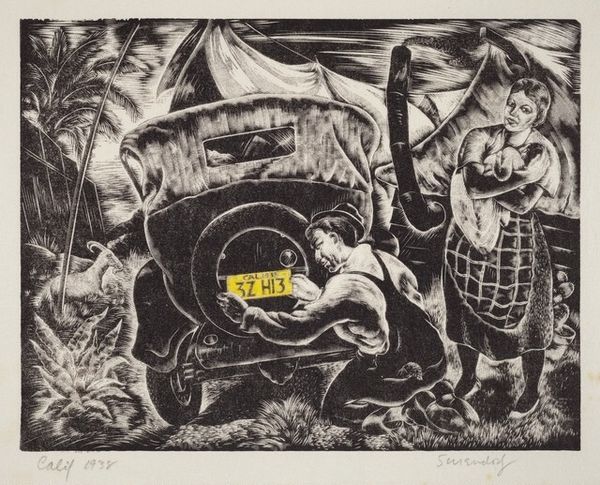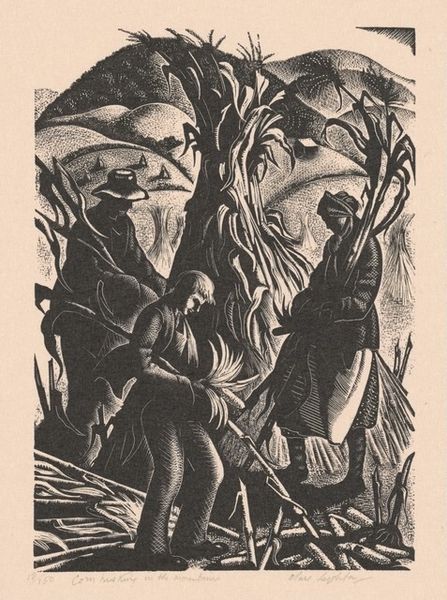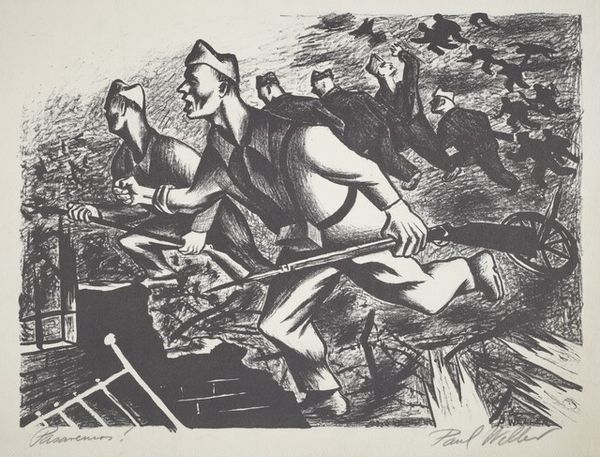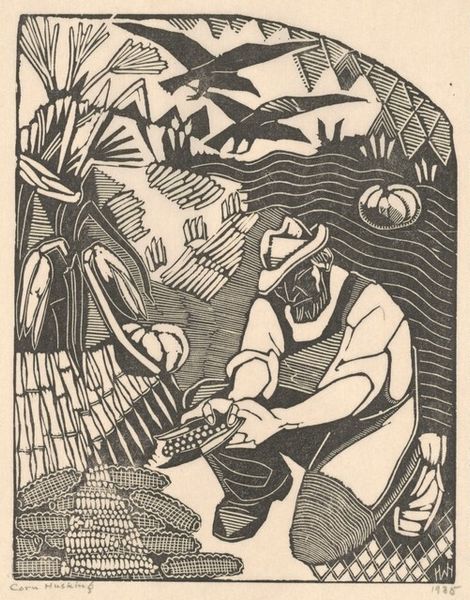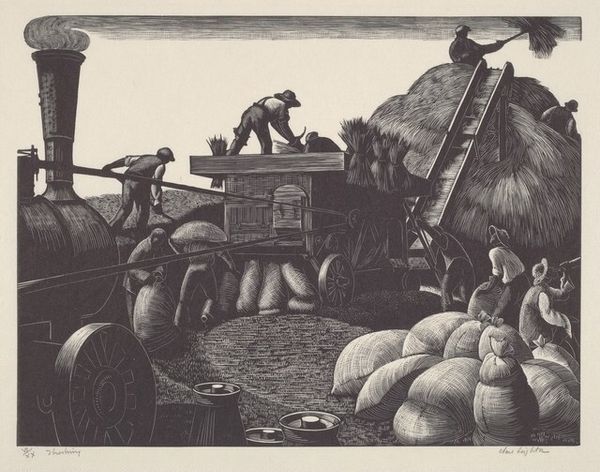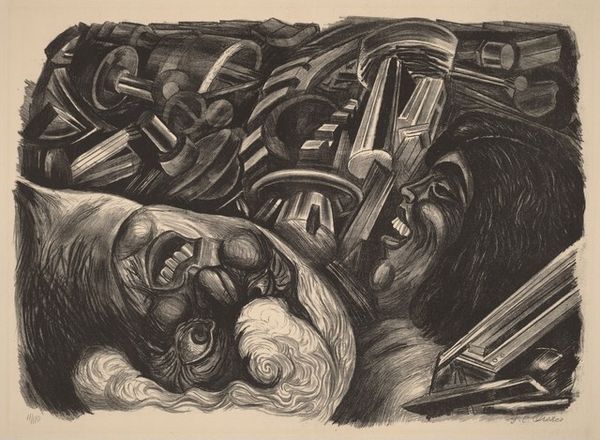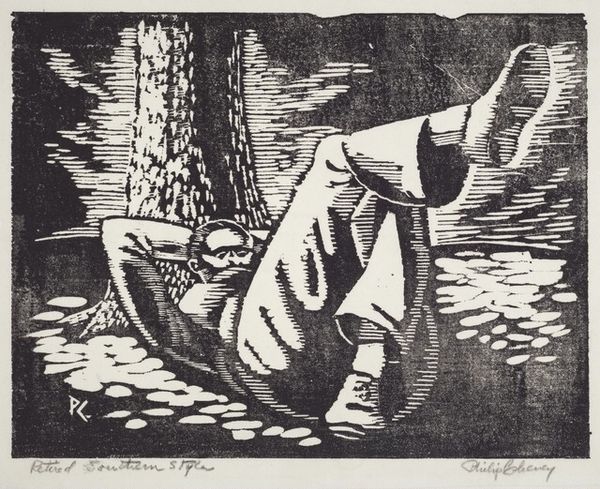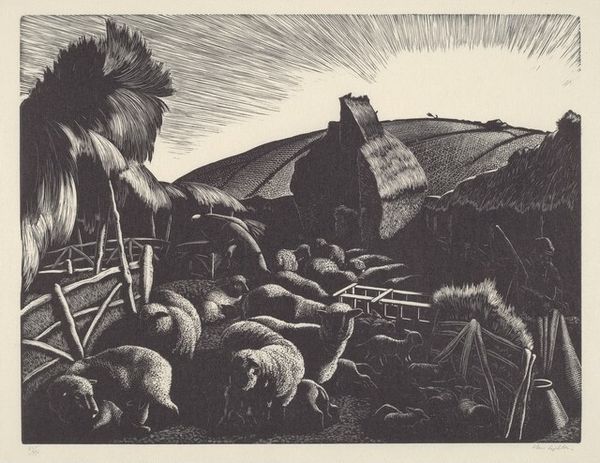
print, woodcut
# print
#
landscape
#
figuration
#
woodcut
#
genre-painting
#
realism
Dimensions: image: 21.9 × 27.9 cm (8 5/8 × 11 in.) sheet: 27.9 × 37.8 cm (11 × 14 7/8 in.)
Copyright: National Gallery of Art: CC0 1.0
Editor: Clare Leighton's woodcut, "Apple Picking" from 1932, really grabs my attention with its bold use of black and white. The figures working amongst the apple trees create this feeling of communal labor. What is your take on this work, given the context of the time? Curator: It's a powerful piece. Leighton’s woodcuts often romanticize rural labor, but it's important to consider the context. The 1930s was a time of economic hardship, and there was a rise of social realism in art. How might Leighton’s image function as propaganda, or perhaps social commentary? Editor: I see what you mean. I hadn't really considered it beyond just a depiction of work. The idealized representation makes me question whether she's actively documenting anything other than a vision of community. What effect does this stylization create for viewers in different social and economic brackets? Curator: Exactly. The visual choices here become political. By simplifying forms and focusing on the activity, she potentially idealizes the lives of rural workers, maybe even to provide a sense of stability and continuity to those who are unemployed or insecure. The composition makes their activity look noble. Do you see any indicators in the way it’s composed that disrupt the "common" man, signs that make us acknowledge economic inequalities? Editor: I notice that although the style has hints of realism, there are some discrepancies and simplification when one truly focuses. Is that a form of rhetoric that the image can weaponize? Are the workers intended to reflect other classes of people as well? Curator: Yes, it absolutely is. Art isn't just reflective; it’s an active participant in shaping ideologies. By using certain aesthetics or choosing specific perspectives, "Apple Picking" can work as an ideological project reflecting or shaping people’s perceptions and beliefs on labor, the society, the economy, etc. Editor: This is such a fascinating perspective. It changes how I see not just this print, but art with a message generally. Curator: Indeed. Hopefully you’ll think twice about the ways art plays on social consciousness going forward.
Comments
No comments
Be the first to comment and join the conversation on the ultimate creative platform.
